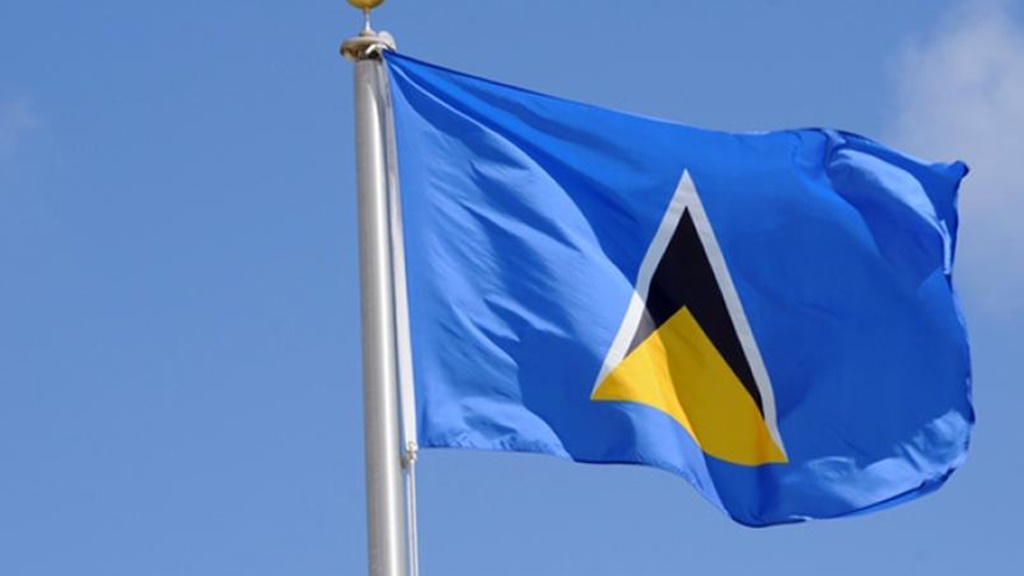|
As we get set to celebrate St Lucia’s 42nd
Independence Anniversary under the theme ‘A Resilient Nation. We can, we will’,
it is only fitting that we highlight things that are native to the island.
This year's theme signifies a nation battling the
significant toll of the COVID-19 pandemic and looks to a nationwide effort to
persevere.
The national symbols are the national identity
elements of St Lucia and are intrinsic to the St Lucian identity and heritage.
St Lucians across the world are proud of these National Symbols as they infuse
a sense of pride and patriotism in all of their hearts.
The National Flag
For most of its colonial history under the French
and British, Saint Lucia did not have a distinctive flag of its own. However,
on March 1, 1967, when St Lucia advanced to the status of Associated Statehood,
the National Flag was adopted. The original version of the flag in use today
was designed by local artist Dunstan St Omer.
Coat of Arms
Did you know that St Lucia had more than one Coat
of Arms? In 1837 ST Lucia had its’ first Coat of Arms which depicted Port
Castries flanked by the Pitons and the Citadel at Morne Fortune. At that time
the motto was ‘Statio Haud Malefida’ meaning ‘A safe harbor for ships.’ Upon
attaining Statehood on March 01, 1967, the Coat of Arms was designed by Sydney
Bagshaw with the motto ‘The Land, the People, the Light.’ However, in 1979,
when St Lucia became an independent nation Bagshaw gave the Coat of Arms a
different look but kept the motto “The Land, the People, the Light.
The Coat of Arms represents the official seal of
the Government of Saint Lucia. The emblem on the Coat of Arms were chosen to
represent the various peoples who are part of the nation’s heritage. It is made
of a blue shield with a stool, two roses, and two fleurs de lis. The shield is
supported by two Saint Lucian parrots. Beneath the shield is the national
motto, whereas above the shield there is a torch and an ornament. The symbolism
of the elements are:
Tudor Rose: England
Fleur de lis: France
Stool: Africa
Torch: Beacon to light the
path
Saint Lucia Parrot: Amazona
versicolor, the National Bird
The Motto: " The Land, The People, The
Light"
National Bird
The Saint Lucia Parrot (Amazona versicolor) is
endemic to Saint Lucia and is the country’s national bird. It was first
described by Miller in 1776, this beautiful parrot is, and always has been
found only in Saint Lucia. It is predominantly green in colour, and a typical
specimen has a cobalt blue forehead merging through turquoise to green on the
cheeks and a scarlet breast. Threatened by extinction, in 1978 the Forestry
Division of the Ministry of Agriculture launched a campaign to save this
species. In 1979 the Saint Lucia Parrot was declared the island’s National Bird
and in 1980 wildlife legislation was revised.
The National Anthem
The national anthem of Saint Lucia is ‘Sons and
Daughters of Saint Lucia.’ The anthem was first adopted in 1967 when the island
became an Associated Statehood, and it was confirmed as the official anthem
when St Lucia became independent in 1979. The lyrics were written by Rev
Charles Jesse, and the music by Leton Thomas.
The National Dress
The Madras, also called the Jip or Jupe, is the
national dress of the country of Saint Lucia. A traditional five-piece costume,
it was originally derived from the Wob Dwyiet (or Wobe Dwiette), a grand robe
worn by the earlier French settlers, and this garment is also recognized as a
national dress of the country. The Madras is the traditional dress of the women
and girls of St Lucia, and its name is derived from the Madras cloth, a fabric
used in the costume.
The origins of the Madras lie in the
pre-emancipation days of St Lucia when African slaves on the island would don
the colorful dress during feast days. The costume is traditionally worn on
Independence Day, National Day, and Creole Day (Jounen Kwéyòl). It is also worn
when dancing the Quadrille, which has been adopted by the country as the
national dance.
National Flower, Plant and Tree
The Rose and the Marguerite are the symbols of the
two flower societies of Saint Lucia. They emerged as winners of the National
Flower Competition in September 1985. They are associated with the Flower Festivals;
La Rose Festival celebrated on August 30 and La Marguerite on October 17.
The national tree of Saint Lucia is the calabash
and the national plant is the bamboo.
|


